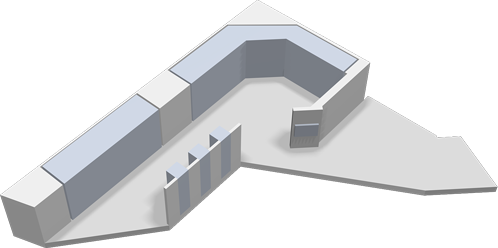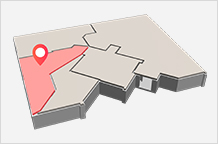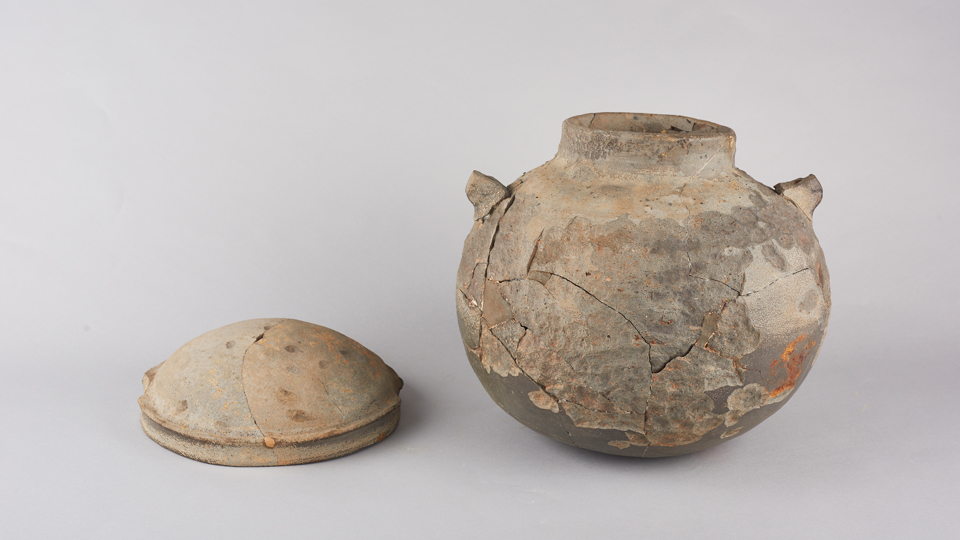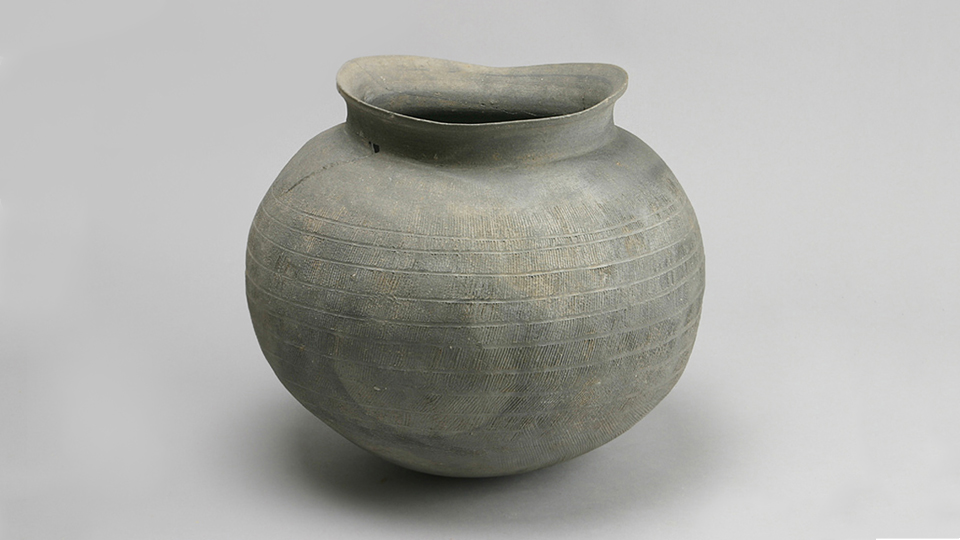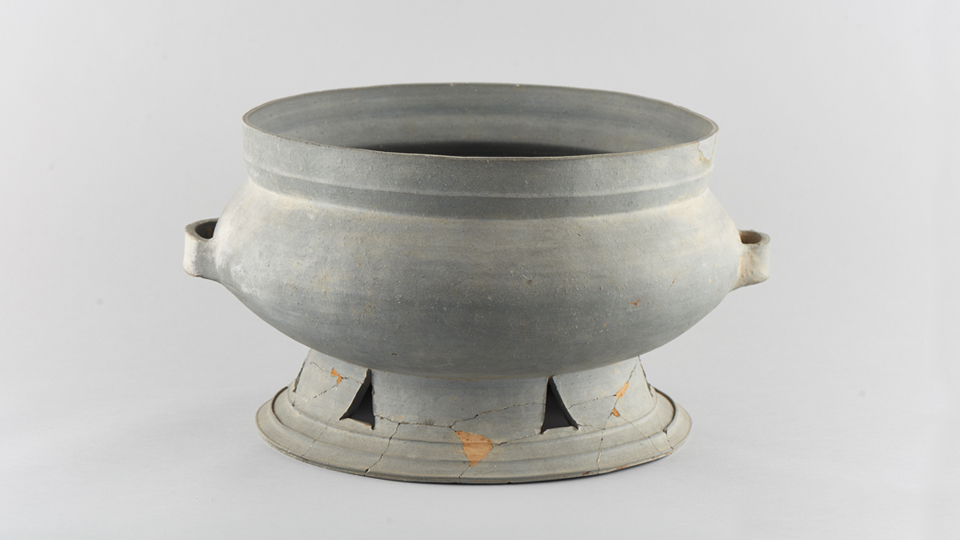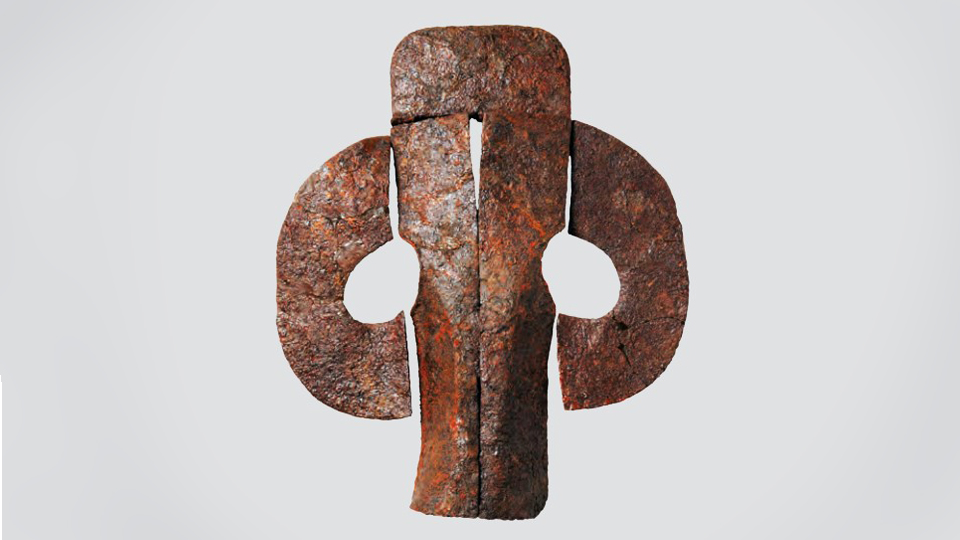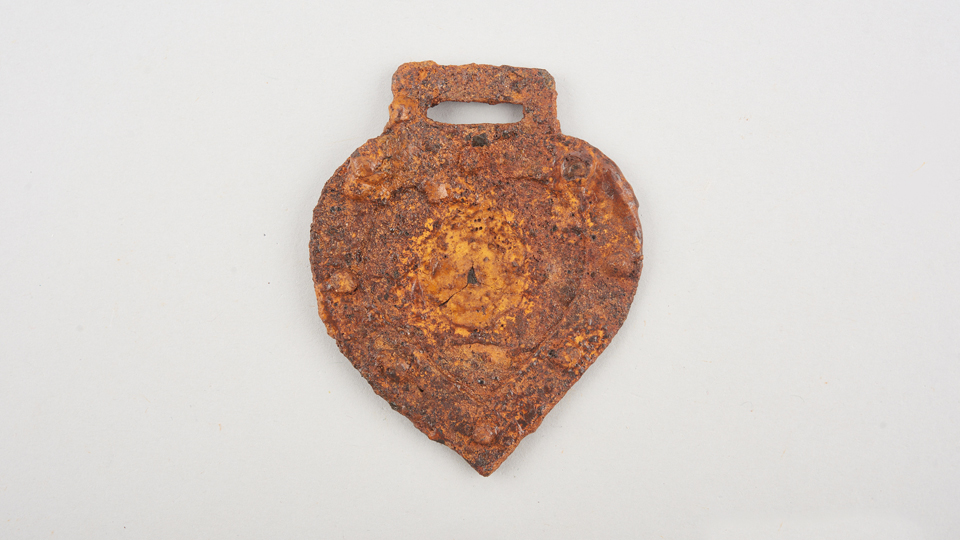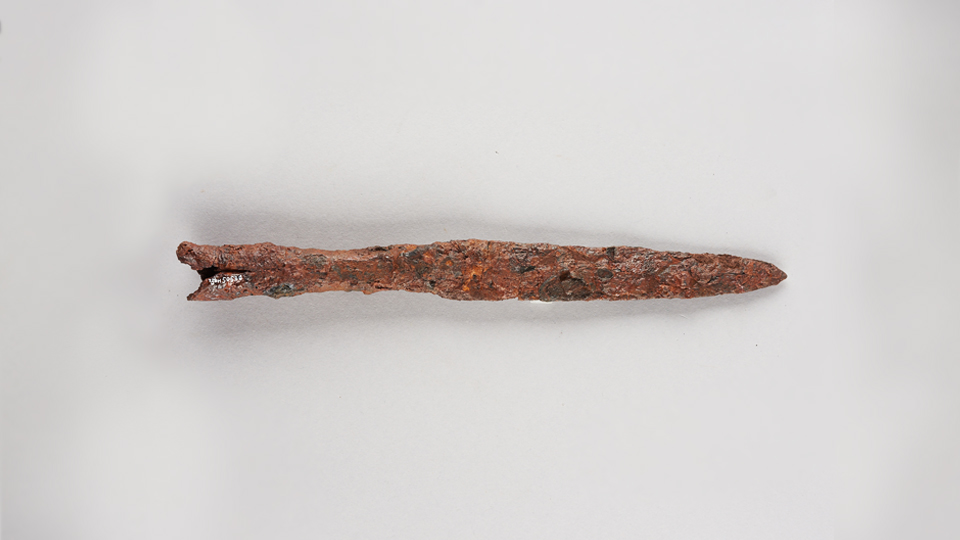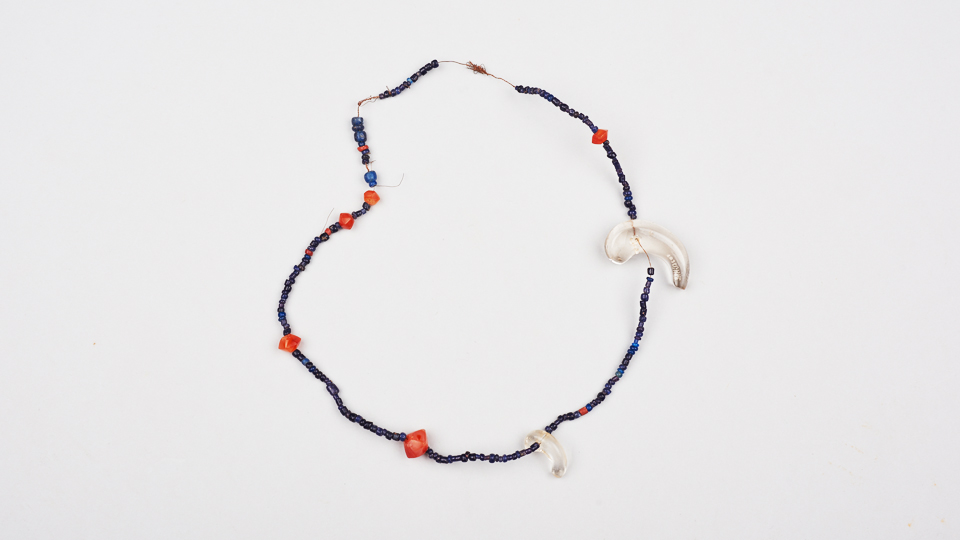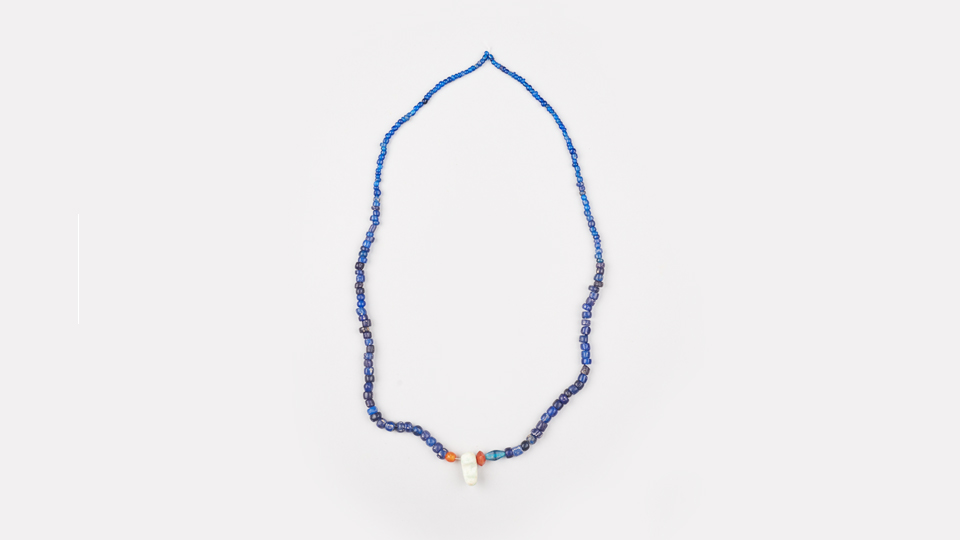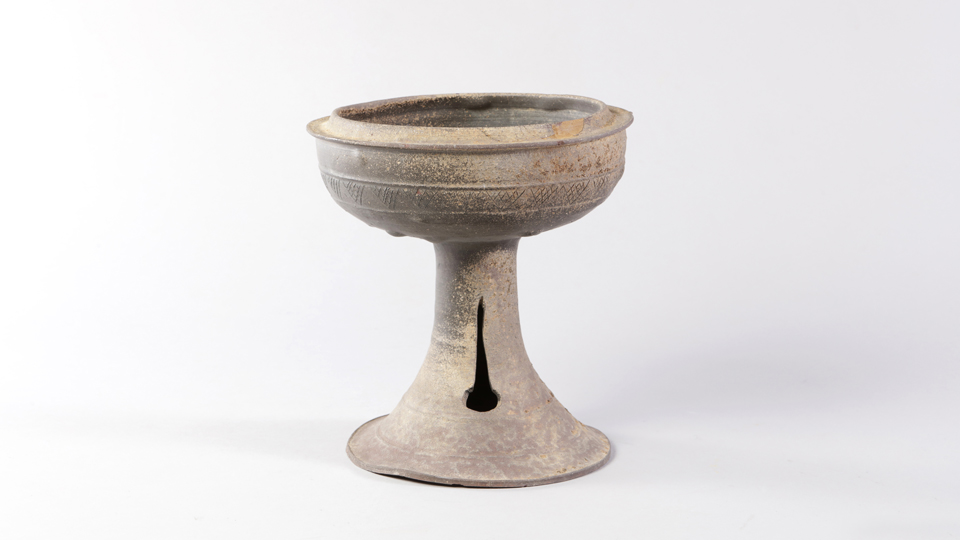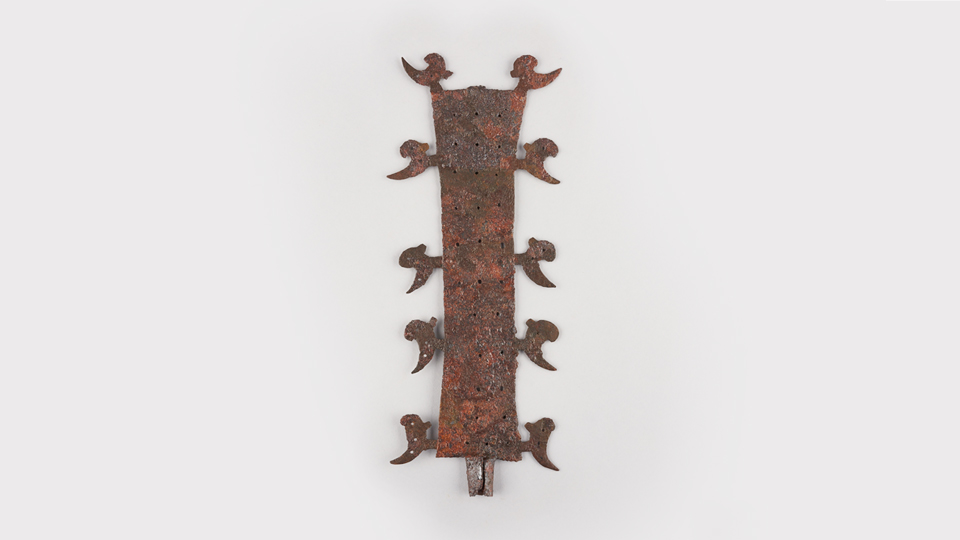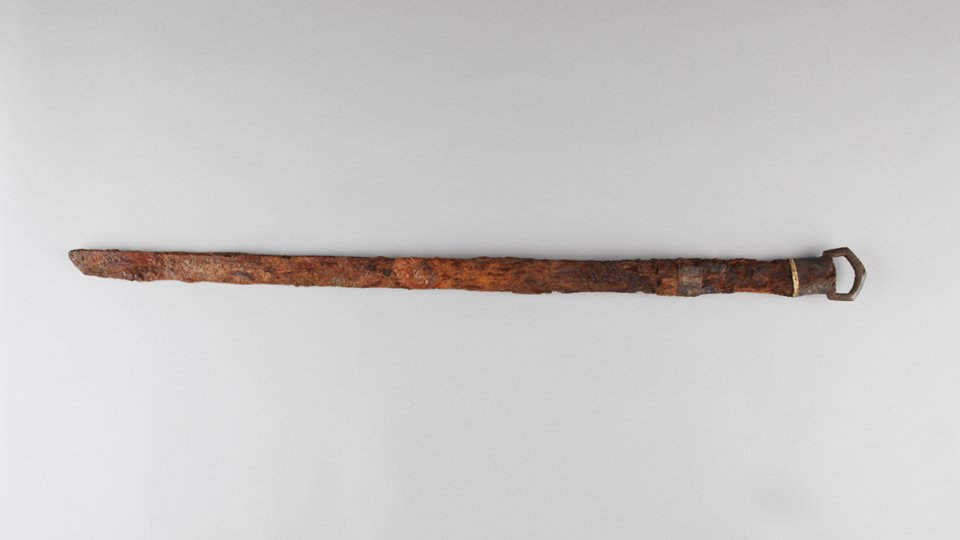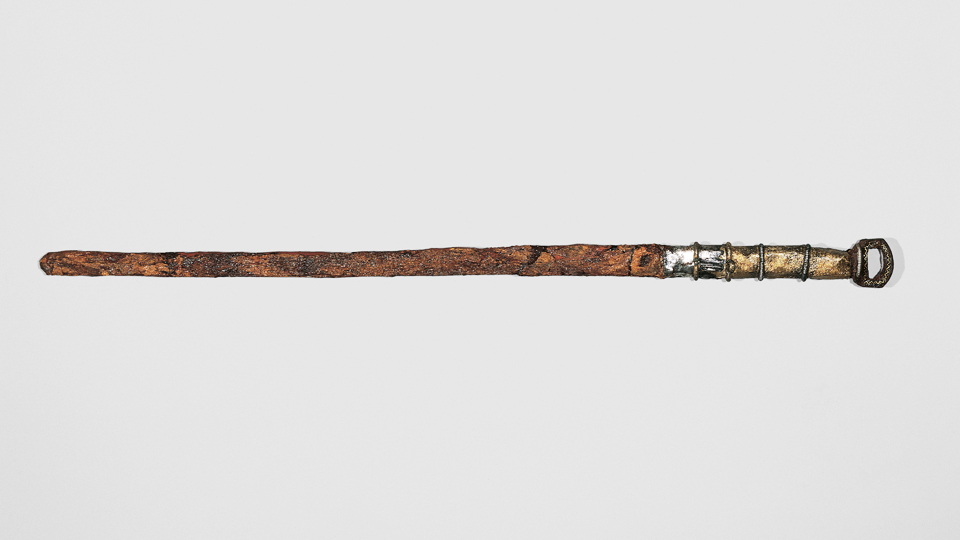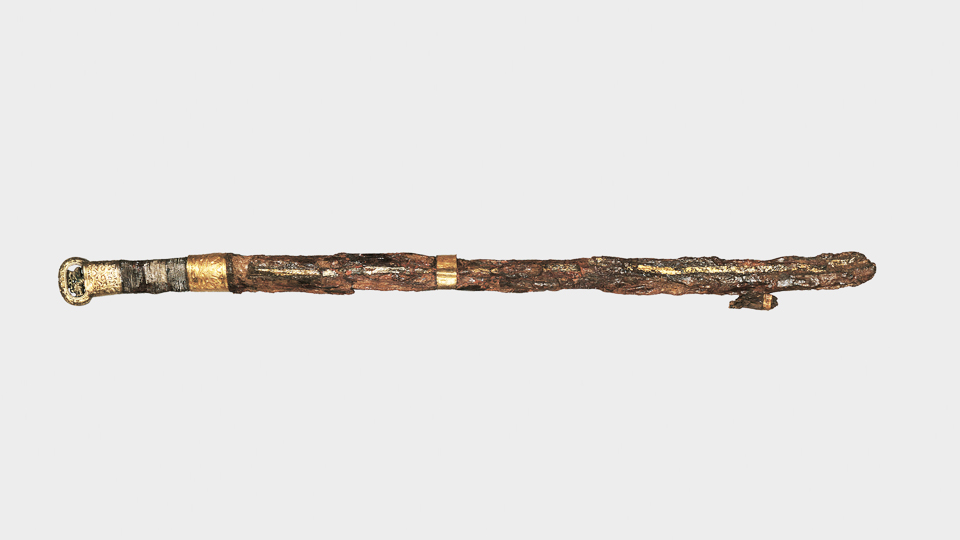Development of Gaya
The growth of Gaya, which had started as one of the small polities of Byeonhan, was based upon its advanced iron production capacity and its role in the intermediary trade that took place along the southern sea route. Such changes are reflected in the dramatic development of the tombs of the ruling class around the late 3rd century. The 4th century is notable for the remarkable growth of Geumgwan Gaya. The development of Dae Gaya took place aer the 5th century, accompanied by Ara Gaya and So Gaya. The large tombs and various excavated artifacts discovered throughout Gaya’s old territory demonstrate the superior economic power and social influence of the rulers at the time.
- Section 19Appearance of Hard Pottery and Grand Funerals
- Section 20Horse Equipment and Other Types of Iron Objects
- Section 21Foreign Objects
- Section 22Development of Ara Gaya and Dae Gaya
- Section 23Long-necked Jar with Lid · Bowl-shaped Vessel Stand
- Section 24Sword with Dragon and Phoenix Decorated Ring Pommel
- Section 25Saw Knife
In Gaya territory during the late 3rd century, pottery began to be produced using a newly introduced technology. Pottery was fired at temperatures exceeding 1,000℃ in an airtight kiln, making the vessels much harder than before. Starting with short-necked jars, various types of hard pottery vessels came to be produced. Additionally, it was from this time that dozens of vessels, which contained a bounty of ceremonial food, began to be buried in the tombs of rulers. The tradition of providing grand funerals for the dead had existed previously, but the dramatic changes that occurred at this time show how wealth and power had become more concentrated in the hands of the ruling class.
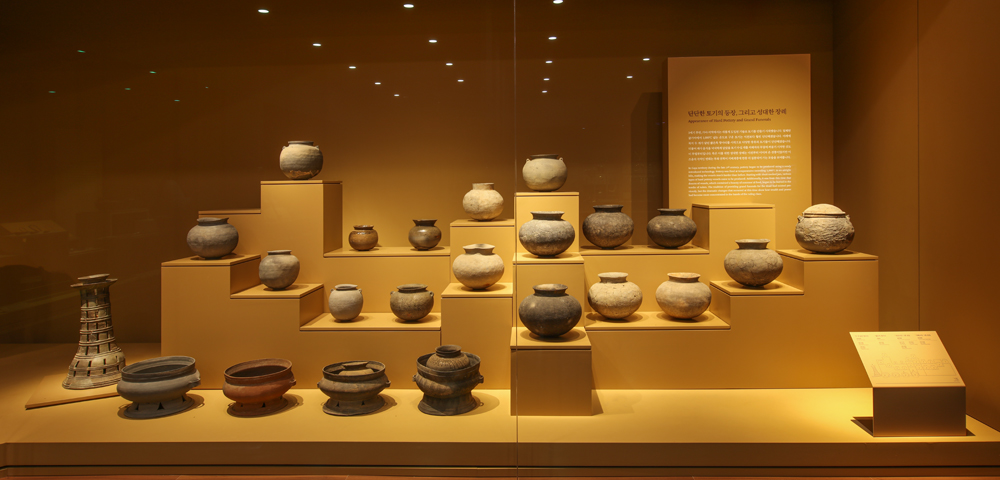
-
Jar with Two Lugs Yangdong-ri, Gimhae,
Height: 27.5cm(Right) -
Short-necked Jar Daeseong-dong, Gimhae,
Height: 26.3cm -
Brazier-shaped Vessel Stand Gujiro, Gimhae,
Height: 27.2cm
Raising and equipping horses is costly and so the ownership of horses and horse equipment was one of the key elements symbolizing status in ancient societies. A set of utilitarian horse equipment, including stirrups, a saddle, and various other decorations, was discovered in a Geumgwan Gaya elite tomb dating to the 4th century. Iron ingots, which were used as both material for making various tools and as currency, featured in funerals, alongside large quantities of weapons such as swords with ring pommels, spearheads, and arrowheads.

-
Horse Headguard Daeseong-dong, Gimhae,
Length: 60cm -
Horse Strap Decorations Daeseong-dong, Gimhae,
Length: 8cm -
Iron Spearhead Daeseong-dong, Gimhae,
Length: 31.5cm
Foreign objects originating from various regions have been discovered in the Nakdong River estuary and coastal areas, which was an important place in the East Asian maritime trade network. They illustrate the international status of Gaya, which had developed significantly at the time. A variety of foreign artifacts were discovered at this site, including bronze cauldrons and belt buckles from China’s Jin (晉) Dynasty, sets of horse equipment originating from the northern Xianbei tribes, and bronze items, jade, and tropical shells from the Japanese Archipelago.
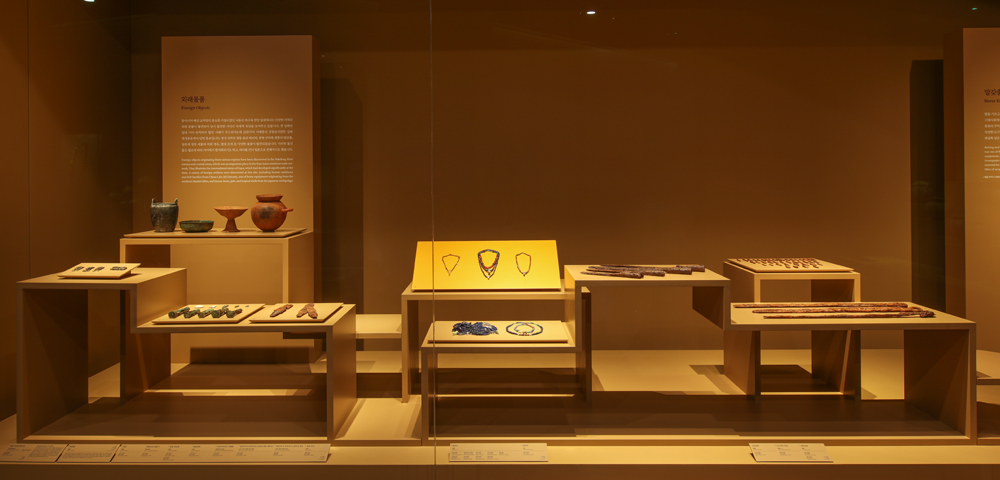
-
Necklace Chilsan-dong, Gimhae,
Comma shaped Ornament Length: 1.1cm -
Necklace Mangdeok-ri, Gimhae,
Comma shaped Ornament Length: 1.9cm -
Japan Haji Pottery
(Mounted Dish) Hyeon-dong, Changwon,
Height: 13.1cm
The development of Ara Gaya can be observed in the ancient tombs of Marisan, in Haman. Mounted dishes with flame-shaped perforations are characteristic of Ara Gaya, and many iron items have also been identified. Ara Gaya’s heyday was during the 5th century, and it played a leading role in uniting Gaya forces against Silla, which was advancing into the west of the Nakdong River in the 6th century. Dae Gaya, which was centered in Goryeong, emerged as Gaya’s hegemon in the late 5th century and even dispatched diplomatic envoys directly to China’s Southern Qi (南齊) Dynasty. Among the Gaya polities, Dae Gaya was the only one to have developed a unique style of weapons and gold-based fine metalworking, in addition to a distinctive pottery style, which demonstrates its extraordinary status. Artifacts discovered in large tombs in parts of the eastern Honam region, including Jangsu, Namwon, and Suncheon, clearly show Dae Gaya at its zenith.

-
Mounted Dish Marisan, Haman,
Height: 20.7cm -
Saw Knife Marisan, Haman,
Length: 45.6cm -
Swords with Ring Pommel Bangyeje, Hapcheon,
Length: 61cm

Daeseong-dong, Gimhae, The 5th century, Height: 38.8cm
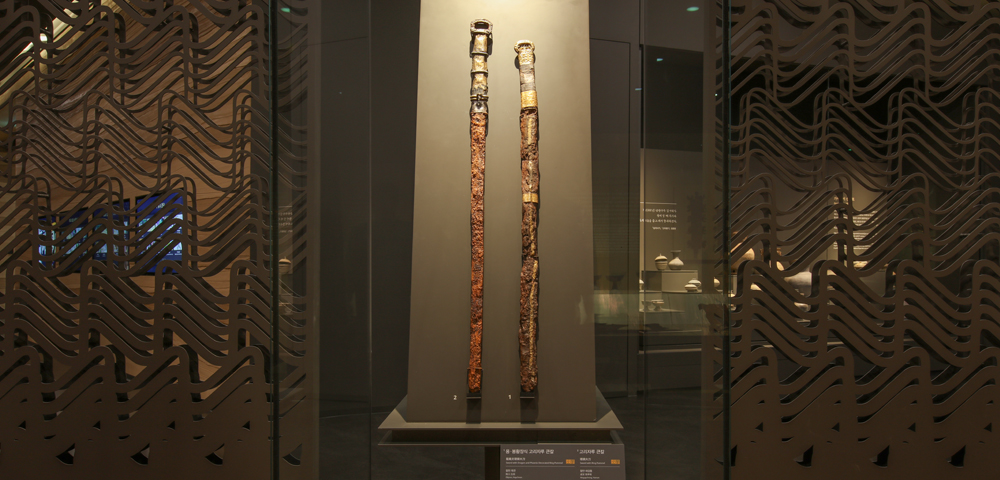
-
Sword with Ring Pommel Magapchong, Haman,
Length: 89.7cm -
Sword with Dragon and Phoenix Decorated Ring Pommel Okjeon, Hapcheon,
Length: 83cm
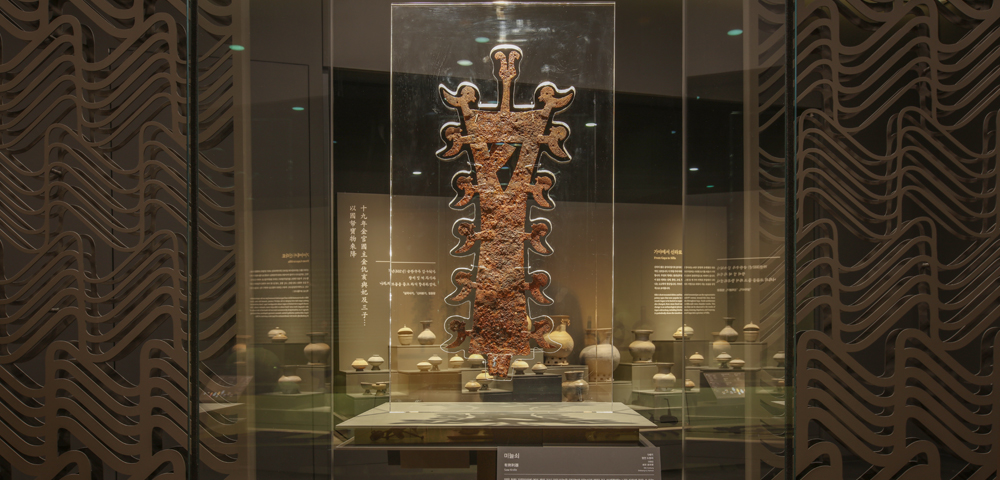
Dohang-ri, Haman, The 5th century, Height: 60cm
